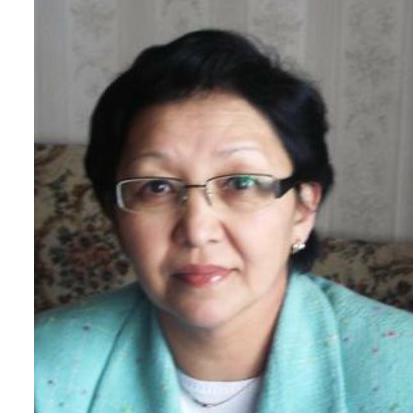Фотовольтаические свойства функционализированного индодикарбоцианинового красителя
DOI:
https://doi.org/10.31489/2022No3/55-59Ключевые слова:
полиметиновые красители, функциональные группы, оптические свойства, фотовольтаикаАннотация
Изучено влияние химического строения полиметиновых красителей на их спектрально-люминесцентные и фотовольтаические свойства. Показано, что введение функциональных групп в структуру красителя приводит к батохромному сдвигу полос поглощения и флуоресценции. При адсорбции красителей на поверхности диоксида титана был зарегистрирован сдвиг их спектров в область красных длин волн с одновременным уширением полос, вызванных агрегацией красителя на поверхности полупроводника. Зарегистрировано уменьшение времени жизни возбужденного состояния молекул на 64 и 30% для красителей 1 и 2, соответственно. Тушение времен жизни флуоресценции адсорбированных молекул является результатом передачи электрона от красителя к полупроводнику. Измерения фотовольтаических параметров солнечных ячеек, сенсибилизованных исследуемыми красителями показали большую эффективность для функционализированного красителя, что связано с более лучшей адсорбцией данного соединения на TiO2.
Библиографические ссылки
Sharma K., Sharma V., Sharma S.S. Dye-sensitized solar cells: fundamentals and current status. Nanoscale Research Letters. 2018. Vol. 13, pp.381(1-6).
Freitag M., Teuscher J., Saygili Y., et al. Dye-sensitized solar cells for efficient power generation under ambient lighting. Nature Photon. 2017. Vol. 11, pp. 372–378.
Ishchenko A. A. Structure and spectral-luminescent properties of polymethine dyes. Russian Chemical Reviews. 1991. Vol. 60, No. 8, pp. 865–884.
Ibrayev N. Kh., Seliverstova E. V., Ishchenko A. A., et al. The effect of sulfonate groups on spectral-luminescent and photovoltaic properties of squarylium dyes. Journal of Photochemistry and Photobiology A: Chemistry. 2017. Vol. 306, pp. 570-575.
Ibrayev N., Omarova G., Seliverstova E., et al. Plasmonic effect of Ag nanoparticles on polymethine dyes sensitized titanium dioxide. Engineered Science. 2021.Vol. 14, pp. 69–77.
Ibrayev N., Seliverstova E., Omarova G., et al. Sensitization of TiO2 by merocyanine dye in the presence of plasmon nanoparticles. Materials Today: Proceedings. 2022. Vol. 49, pp. 2464-2468.
Ibrayev N.Kh., Ishchenko A.A., Afanasyev D.A., Zhumabay N. D. Active laser medium for near-infrared spectral range based on electron-unsymmetrical polymethine dye and silver nanoparticles. Applied Physics B: Lasers and Optics. 2019. Vol. 125, pp. 1-7.
Ibrayev N., Afanasyev D., Ishchenko A., et al. Influence of silver nanoparticles on the spectral-luminescent and lasing properties of merocyanine dyes solutions. Laser Physics Letters. 2021. Vol. 18, No. 8, pp. 085001(1-6).
Bulavko G. V., Ishchenko A.A. Organic bulk heterojunction photovoltaic structures: design, morphology and properties. Russian Chemical Reviews, 2014, Vol. 83, No. 7, pp. 575–599.
Ishchenko A.A. Laser media based on polymethine dyes. Quantum Electronics. 1994. Vol. 24, No. 6, pp. 471-492.
Bezrodnyi V. I., Ishchenko A.A. High-energy single pulse and multispike operation with a passive polymer Q-switch. Optics and Laser Technology. 2002. Vol. 34, No. 1, pp.7-13.
Klimusheva G., Bugaychuk S., Garbovskiy Yu., et al.Fast dynamic holographic recording based on conductive ionic metal-alkanoate liquid crystals and smectic glasses. Optics Letters. 2006. Vol. 31, No. 2, pp. 235-237.
Bondarev S. L., Tikhomirov S. A., Knyukshto V. N., et al. Fluorescence and solvatochromism of a merocyanine dye with a high quadratic polarizability in solutions and polymer films. Journal of Luminescence. 2007. Vol. 124, No. 1, pp. 178-186.
Voiciuk V., Redeckas K., Derevyanko N. A., et al. Study of photophysical properties of a series of polymethine dyes by femtosecond laser photolysis. Dyes and Pigments. 2014. Vol. 109, pp. 120-126.
Davidenko N.A., Ishchenko A.A. Spin conversion and electric field effect on photoluminescence in amorphous molecular semiconductors doped with ionic dyes. Chemical Physics. 1999. Vol. 247, pp. 237-243.
Ciubini B., Visentin S., Serpe L., et al. Design and synthesis of symmetrical pentamethine cyanine dyes as NIR photosensitizers for PDT. Dyes and Pigments. 2019. Vol. 160, pp. 806-813.
Dereje D.M., Pontremoli C., Moran Plata M.J., et al. Polymethine dyes for PDT: recent advances and perspectives to drive future applications. Photochemical&Photobiological Sciences. 2022. Vol. 21, pp. 397-419.
Winstead A., Williams R. Application of microwave assisted organic synthesis to the development of near-IR cyanine dye probes. In Environmental Biosensors. Somerset V. (Ed.), InTech, 2010, pp. 237-254.
Ma X., Hua J., Wu W., et al.A high-efficiency cyanine dye for dye-sensitized solar cells. Tetrahedron. 2008. Vol. 64, pp. 345-350.
Funabiki K., Mase H., Saito Ya., et al. Design of NIR-absorbing simple asymmetric squaraine dyes carrying indoline moieties for use in dye-sensitized solar cells with Pt-free electrodes. Organic Letters. 2012. Vol. 14, pp.1246-1249.
Ghann W., Kang H., Emerson E., et al. Photophysical properties of near-IR cyanine dyes and their application as photosensitizers in dye sensitized solar cells. Inorganica Chimica Acta. 2017. Vol. 467, pp. 123-131.
Mishra A., Markus M., Fischer K. R., et al. Metal-free organic dyes for dye-sensitized solar cells: from structure: property relationships to design rules. Angewandte Chemie International Edition. 2009. Vol. 48, pp. 247-249.
Naim W., Novelli V., Nikolinakos I., et al. Transparent and colorless dye-sensitized solar cells exceeding 75% average visible transmittance. JACS Au. 2021. Vol. 1, No. 4, pp. 409-426.
Seliverstova E., Ibrayev N., Omarova G., et al. Competitive influence of the plasmon effect and energy transfer between chromophores and Ag nanoparticles on the fluorescent properties of indopolycarbocyanine dyes. Journal of Luminescence. 2021. Vol. 235, pp. 118000.
Ibrayev N. Kh., Dzhanabekova R. Kh., Amanzholova G. S. Spectral and luminescent properties of carbon quantum dots functionalized with N- and S-contaning groups. Eurasian phys. tech. j. 2021. Vol. 18, No. 2, pp. 12-17.
Zhumabekov A. Zh., Ibrayev N. Kh., Seliverstova E.V. Investigation of photocatalytic activity of TiO2–GO nanocomposite. Eurasian phys. tech. j. 2019. Vol. 16, No. 1, pp. 42-46.
Ito S., Murakami T.N., Comte P., et al. Fabrication of thin film dye sensitized solar cells with solar to electric power conversion efficiency over 10%. Thin Solid Films.2008. Vol. 516, pp. 4613-4619.
Kathiravan A., Renganathan R. Effect of anchoring group on the photosensitization of colloidal TiO2 nanoparticles with porphyrins. Journal of Colloid and Interface Science. 2009. Vol. 331, No. 2, pp. 401-407.
Huber R., Sporlein S., Moser J. E., et al. The role of surface in the ultrafast photoinduced electrone transfer from sentisized dye molecules to semiconductor colloids. Journal of Physical Chemistry B. 2000. Vol. 104, pp. 8995-9003.















